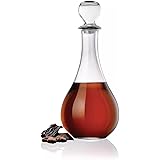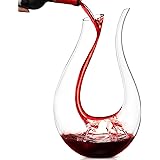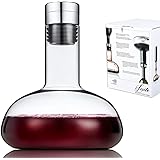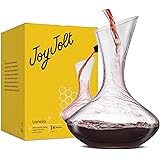Do you believe you truly understand Bordeaux wine, or are your perceptions shaped by generations past? The mere mention of Bordeaux often conjures images of opulent chateaus and famously expensive red wines, perhaps from a cherished collection. However, as the accompanying video thoughtfully explores, this celebrated French wine region offers an incredibly diverse and surprisingly accessible experience far beyond these traditional notions.
Bordeaux, the gold standard in winemaking for centuries, continues to evolve dramatically. It is time to challenge preconceived notions and discover an exciting new chapter unfolding in this iconic region. This comprehensive guide delves deeper into Bordeaux’s rich history, its often-misunderstood classification systems, and the vibrant modern scene producing wines for every palate and price point.
Unraveling Bordeaux’s Storied Winemaking History
The history of Bordeaux is as deep and complex as its most revered wines, with evidence of viticulture dating back to the first century AD. This remarkable longevity underscores the region’s inherent suitability for grape growing. Its favorable soil composition, coupled with crucial access to the Atlantic via the Garonne River, created ideal conditions for both cultivation and transport.
Bordeaux’s initial major breakthrough occurred in the 12th century, when a royal marriage granted England ownership of the region for over three centuries. This pivotal alliance facilitated the widespread export of Bordeaux wine, effectively promoting it across the globe. Subsequently, the Dutch played a transformative role in the 16th century, applying their advanced technology to drain the previously unusable marshlands along the Left Bank. This engineering feat not only improved wine transportation but also opened vast new tracts of land for viticulture, giving rise to the now-famed Médoc region.
By the late 1600s, specific chateaus began establishing individual reputations, moving beyond generic regional recognition. The 1700s saw the formal delineation of AOCs (Appellations d’Origine Contrôlée), solidifying regional identities. Bordeaux’s fame was well-established by the 1800s, yet a truly monumental event in 1855 would indelibly reshape its global standing and wine classification system forever.
Beyond the Fabled 1855 Bordeaux Classification
The 1855 classification, a seemingly minor request by Emperor Napoleon III for his Universal Exposition in Paris, unexpectedly created a lasting legacy. Tasked with ranking Bordeaux’s best chateaus, the Bordeaux Chamber of Commerce based their assessment primarily on the selling prices of the day. This process resulted in 61 chateaus being categorized into five “growths,” from First to Fifth.
Crucially, this list represented only a tiny fraction of Bordeaux’s entire wine production, with almost all selections hailing from the Médoc region and being red wines. The initial intention was a temporary guide for the Exposition, never meant to be a permanent, definitive ranking. However, this hastily compiled list, reputedly scribbled on the back of an envelope, became the enduring benchmark, profoundly influencing wine prices and reputations for nearly two centuries.
It is essential to recognize that the 1855 classification accounts for merely 2% of all Bordeaux wines. Other significant classifications emerged, such as the 1955 Saint-Émilion classification for the Right Bank and the Graves classifications of 1953 and 1959. Additionally, more modern, producer-driven rankings like the Cru Bourgeois and Cru Artisan classifications exist, reflecting ongoing efforts to recognize quality. Many esteemed areas, including the highly regarded Pomerol and the prolific Entre-Deux-Mers, operate entirely outside any formal classification system, yet produce exceptional wines. Therefore, while historical classifications hold importance, they do not offer a complete picture of Bordeaux’s vast winemaking landscape.
Discovering the New Face of Bordeaux Wine: Diversity and Value
Contrary to popular belief, Bordeaux’s offerings extend far beyond expensive red wines. Historically, the region produced more white wines than reds until the 1970s, a testament to its broader winemaking capabilities. Today, a new generation of winemakers is crafting wines in an astonishing array of styles and price points, catering to every occasion imaginable.
For instance, you can easily find delightful sparkling rosés and approachable reds perfect for a casual weeknight. Furthermore, Bordeaux produces serious, complex white wines and renowned sweet dessert wines. The perception that high-quality Bordeaux requires a significant investment is largely a myth. Approximately 90% of Bordeaux wines retail for under $50 a bottle, offering incredible value and accessibility. With an annual production ranging between 600 and 900 million bottles, Bordeaux’s output dwarfs regions like Napa Valley, which produces around 120 million bottles annually, ensuring a vast selection of amazing wines at solid prices.
Additionally, many top “Cru” chateaus produce “second wines,” which are more approachable and often crafted from younger vines. These provide an excellent opportunity to experience the winemaking philosophy of famous producers at a fraction of the cost. The contemporary Bordeaux region embraces innovation, with winemakers experimenting with biodynamic practices, new grape varieties, and alternative aging systems like amphora. This dynamic spirit ensures that while tradition is respected, the future of Bordeaux wine is continually being written with exciting new expressions.
Bordeaux: A Vibrant Cultural and Wine Destination
The city of Bordeaux itself is celebrated as one of France’s most cherished urban centers, a relaxed, livable, and deeply human-sized city. Recognized as the world’s largest UNESCO World Heritage Site, its charm draws visitors who quickly fall in love with its friendly atmosphere. The Garonne River, the lifeblood of the region, seamlessly connects the bustling city center with the expansive surrounding vineyards, emphasizing Bordeaux’s dual identity as both a cultural hub and a wine epicenter.
For wine enthusiasts, Bordeaux offers an abundance of engaging experiences. The L’École du Vin, Bordeaux’s official wine school, provides a fascinating glimpse into regional wines through various workshops, including blending, basic tasting, and unique pairings like cheese and wine or chocolate and wine. Its Bar à Vin, subsidized by the Bordeaux Wine Council, allows visitors to sample an impressive range of regional wines—including a 2016 Pomerol for just eight euros and Crémant for a few euros—at incredibly accessible prices, making prestigious wines approachable for everyone.
Furthermore, the Cité du Vin, a spectacular modern wine museum, offers an immersive journey through the history and culture of wine worldwide. The welcoming nature of the French, particularly in Bordeaux, often surprises foreigners, dispelling stereotypes of coldness. The region’s genuine hospitality transforms a visit into a truly memorable experience, encouraging deep appreciation for its culture and people. Making the trip to Bordeaux promises not just exceptional wine, but a profound sense of connection and belonging.







